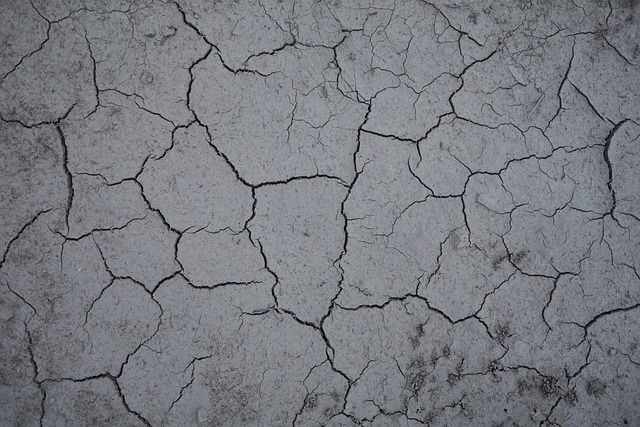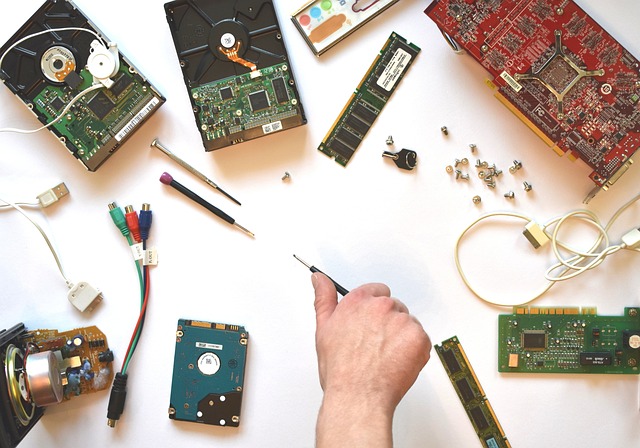Concrete cracks, from surface lines to subsurface fissures, require prompt attention through crack repair techniques. Timely intervention prevents structural damage and preserves aesthetics. Choosing the right materials is key; polymer-modified cement or epoxy for deep cracks, simple patching compounds for shallow ones. Effective methods include cleaning, etching, and applying the chosen material smoothly. Common mistakes involve incorrect materials, inadequate preparation, and unsuitable weather conditions. Regular maintenance, including inspections and sealing, extends concrete lifespan. DIY kits offer temporary solutions for minor cracks, while professional services are necessary for structural areas. Product selection should consider crack severity, location, exposure, and compatibility with concrete.
Concrete cracking is a common issue, but prompt patching can prevent further damage. This comprehensive guide explores the intricacies of concrete crack repair, from understanding the causes and types of cracks to choosing the right materials and methods. We provide a step-by-step process, highlight common mistakes to avoid, offer long-term maintenance tips, and guide you in knowing when professional help is necessary. Discover expert advice on selecting the best crack repair products for optimal results.
Understanding Concrete Cracks: Causes and Types

Concrete cracks can range from minor aesthetic issues to significant structural problems, necessitating prompt crack repair. Understanding their causes and types is crucial in addressing them effectively. Surface cracks, often visible as thin lines or fractures, are typically caused by minor shrinkage or movement of the concrete due to factors like drying, temperature changes, or load shifting. These cracks can be categorized as either hairline cracks, which are shallow and narrow, or wider, more pronounced cracks that might indicate deeper structural issues.
Subsurface cracks, on the other hand, are less apparent but can be just as concerning. They form due to various reasons such as improper concrete mixing, poor compaction, or underlying soil movement. These cracks can extend deeply into the concrete, requiring specialized crack repair techniques. Prompt identification and addressing of these cracks through proper crack repair methods, like sealing, filling, or structural reinforcement, is essential to prevent further damage and ensure the longevity of concrete structures.
The Importance of Prompt Crack Repair

Crack repair, especially when it comes to concrete patching, is a crucial task that shouldn’t be overlooked. Prompt action is key; addressing cracks early prevents them from expanding and deepening, which can lead to more significant structural damage over time. Ignoring crack repair could result in costly repairs or even the need for complete surface replacement.
When cracks appear, it’s essential to assess their severity and take appropriate measures. Smaller cracks can often be repaired with simple DIY methods, ensuring a durable fix that preserves the overall integrity of the concrete surface. Prompt intervention allows for better control over crack width, making it easier to maintain an aesthetically pleasing and structurally sound environment.
Materials and Methods for Effective Patching

When it comes to concrete patching and crack repair, selecting the right materials is paramount. The most common and effective solutions involve using a high-quality polymer-modified cement or a specialized epoxy for deeper cracks. These advanced materials offer superior strength and flexibility compared to traditional concrete mixes, ensuring that repairs withstand environmental stresses and prevent further damage. For smaller cracks, a simple concrete patching compound can be adequate, providing a quick fix until a more permanent solution is needed.
Methods for effective cracking repair involve preparing the surface thoroughly before application. This includes cleaning the crack of any debris or loose concrete, etching the sides to create a rough texture for better adhesion, and ensuring the area is dry and free from moisture. After the surface is ready, materials are mixed according to manufacturer instructions, typically involving a combination of cement, aggregate, and binding agents. The mixture is then applied to the crack, filling it completely and smoothing the surface for an even finish. Depending on the severity of the crack, multiple coats might be required for long-lasting repair.
Step-by-Step Guide to Concrete Crack Repair

Repairing concrete cracks is a straightforward process that can significantly enhance the aesthetics and longevity of your concrete surfaces. Here’s a step-by-step guide to help you get started:
1. Inspect and Clean: Begin by thoroughly inspecting the cracked area, ensuring it’s dry. Remove any loose debris, dirt, or vegetation from the crack using a wire brush or chisel. Cleaning ensures proper adhesion of the repair material.
2. Mix Repair Compound: Follow the manufacturer’s instructions to mix the concrete repair compound, typically a combination of cement, sand, and water. The mixture should be smooth and consistent. Adjusting the consistency is key; it must be thin enough to pour into the crack but not too runny.
3. Prepare Crack for Filling: Using a trowel or crack filling tool, clean out the crack to a depth of at least 1/2 inch (or as recommended by the manufacturer). Ensure the sides of the crack are vertical and free from debris. This step ensures the repair compound fills the crack effectively.
4. Fill the Crack: Pour the mixed repair compound into the prepared crack, using a trowel to smoothen the top and ensure it fills the entire length and width. The compound should be level with or slightly above the surrounding concrete for proper sealing.
5. Cure and Seal: Allow the repair compound to dry completely, following the manufacturer’s recommended drying time. Once cured, lightly mist the repaired area with water to activate any sealing properties of the compound. This step helps prevent future water damage and further crack formation.
Common Mistakes to Avoid During the Repair Process

When undertaking crack repair, it’s essential to be aware of common mistakes that can compromise the long-term integrity of your concrete surface. One frequent error is using the wrong type of patching material for the specific crack size and depth. Different cracks require different solutions; a general-purpose patch may not provide adequate strength or flexibility for larger or deeper cracks, leading to future structural issues.
Another avoidable pitfall is inadequate preparation of the crack before applying the patch. Proper cleaning and degreasing are crucial to ensure good adhesion. Neglecting this step can result in a weak bond between the repair material and the concrete, causing the patch to fail or lift over time. Additionally, weather conditions play a significant role; attempting crack repair during freezing temperatures or when rain is imminent can render the process ineffective and require re-work.
Long-Term Maintenance Tips for Healthy Concrete

Regular maintenance is key to extending the lifespan of your concrete surfaces and preventing long-term damage, especially when it comes to crack repair. One of the most effective strategies is to perform routine inspections, identifying any signs of cracks or damage as early as possible. Addressing these issues promptly can prevent them from escalating and causing more extensive repairs later.
Implementing a comprehensive maintenance plan involves keeping the concrete clean and sealed. Regular cleaning removes dirt and debris that can weaken the surface, while applying high-quality sealers fills in tiny cracks, preventing moisture intrusion. These simple steps, coupled with crack repair when necessary, will ensure your concrete remains in top condition for years to come, saving you from costly renovations down the line.
When to Call in Professional Help

If cracks in your concrete surface are minor and shallow, you might be able to address them with DIY methods such as patching kits available at hardware stores. However, when cracks become wider, deeper, or show signs of structural damage, it’s time to consider professional crack repair services.
Regular maintenance like timely patching can prevent larger issues, but some concrete structures, especially those in harsh environments or heavily trafficked areas, may require expert intervention. Professionals have access to advanced techniques and materials that ensure longer-lasting repairs, preventing further damage and compromising the structural integrity of your concrete.
Choosing the Right Crack Repair Product: A Buyer's Guide

When it comes to crack repair, selecting the right product is paramount for achieving a durable fix. The market offers various options, from epoxy injections to polyurethane sealants, each with unique properties suited to specific crack types and sizes. For narrow, shallow cracks, a flexible polyurethane sealant might be ideal due to its ability to fill small gaps and withstand environmental conditions without losing flexibility. In contrast, deep or wider cracks often require stronger adhesives like epoxy, which can penetrate and bond effectively for long-lasting repair.
Before purchasing, consider the crack’s severity, location, and exposure to elements. Read product descriptions carefully and check customer reviews for insights into their performance in similar scenarios. Additionally, ensure the chosen material is compatible with concrete and suitable for outdoor or indoor use, depending on your needs. This informed selection will contribute to a successful crack repair job, extending the life of your surfaces and preventing further damage from weathering and wear.
